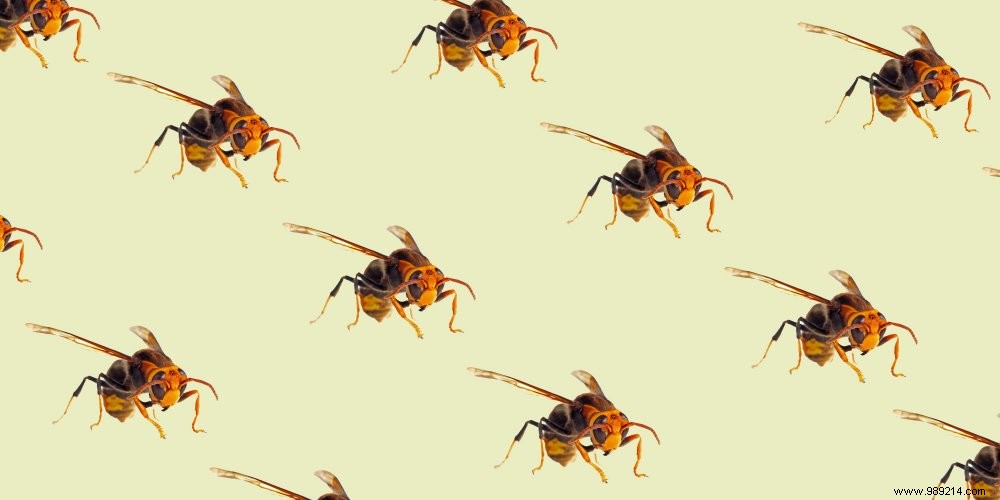 This insect originally from China has now colonized the whole country. Aggressive with bees, it theoretically does not attack humans... unless it feels threatened. Do not approach it:its bites are painful and dangerous for sensitive people.
This insect originally from China has now colonized the whole country. Aggressive with bees, it theoretically does not attack humans... unless it feels threatened. Do not approach it:its bites are painful and dangerous for sensitive people. The Asian hornet is recognizable by its yellow legs and dark body, adorned with a wide band and orange borders. No larger than a European hornet (1.7 to 3.2 cm), it is feared because it causes enormous damage in orchards and apiaries. In town, 80% of his diet consists of bees, which he decapitates when they return loaded with nectar.
Vespa velutina (its scientific name) also attacks butterflies, flies, dragonflies and spiders. He does not specifically seek contact with humans. But if you inadvertently rush it or approach its nest, it can become formidable.
Arriving in southwestern France in 2004 in containers of pottery imported from China, this exotic hornet acclimated well to its new habitat and thrived quickly. Result:it is now established throughout the territory and begins to invade Spain, Portugal, Italy, Belgium, Germany and England. The Paris region is not spared. According to the Fredon Ile-de-France association, which deals with surveillance and pest control, the number of reported and destroyed nests increased from 31 in 2014 to 2353 in 2018!
Perched high in trees or attics, they are not easy to dislodge. Do not intervene yourself. Less than four or five meters away, you could panic the hornets and expose yourself to their bites. Better to contact a professional or your town hall. Many municipalities support the destruction of nests.
Video of the day:A priori not very offensive, the Asian hornet releases its stinger when disturbed. And unlike the bee, it can sting several times in a row , even through rubber boots! The pain is quite severe. The first thing to do is to get rid of anything that can hinder blood circulation (belt, jewelry, watch, etc.) and extract the stinger - without breaking it - using tweezers. Next, use a venom pump to reduce the dose of poison injected, then disinfect the sting.
To minimize pain and limit swelling, apply cold to the lesion (ice pack, Urgo cold spray…).
Allergic or immunocompromised people, young children and the elderly should consult a doctor without delay. Distrust also in the event of a sting in the neck or in the mouth, a angioedema could occur. Although the venom of the Asian hornet is not more toxic than that of the wasp or the European hornet, a few deaths are still to be deplored each summer.
If the reaction is only local (redness, swelling, itching), there is no need to be alarmed. But if vomiting, a severe headache, difficulty breathing or convulsions occur, call 18 or go to the Emergency Department.
A sudden drop in blood pressure or anaphylactic shock – exacerbated allergic reaction involving the vital prognosis – are to be feared in people who have suffered numerous bites or in individuals allergic to the venoms of Hymenoptera (the family of insects to which the hornet belongs). An injection of adrenaline must be performed quickly.
Read also: